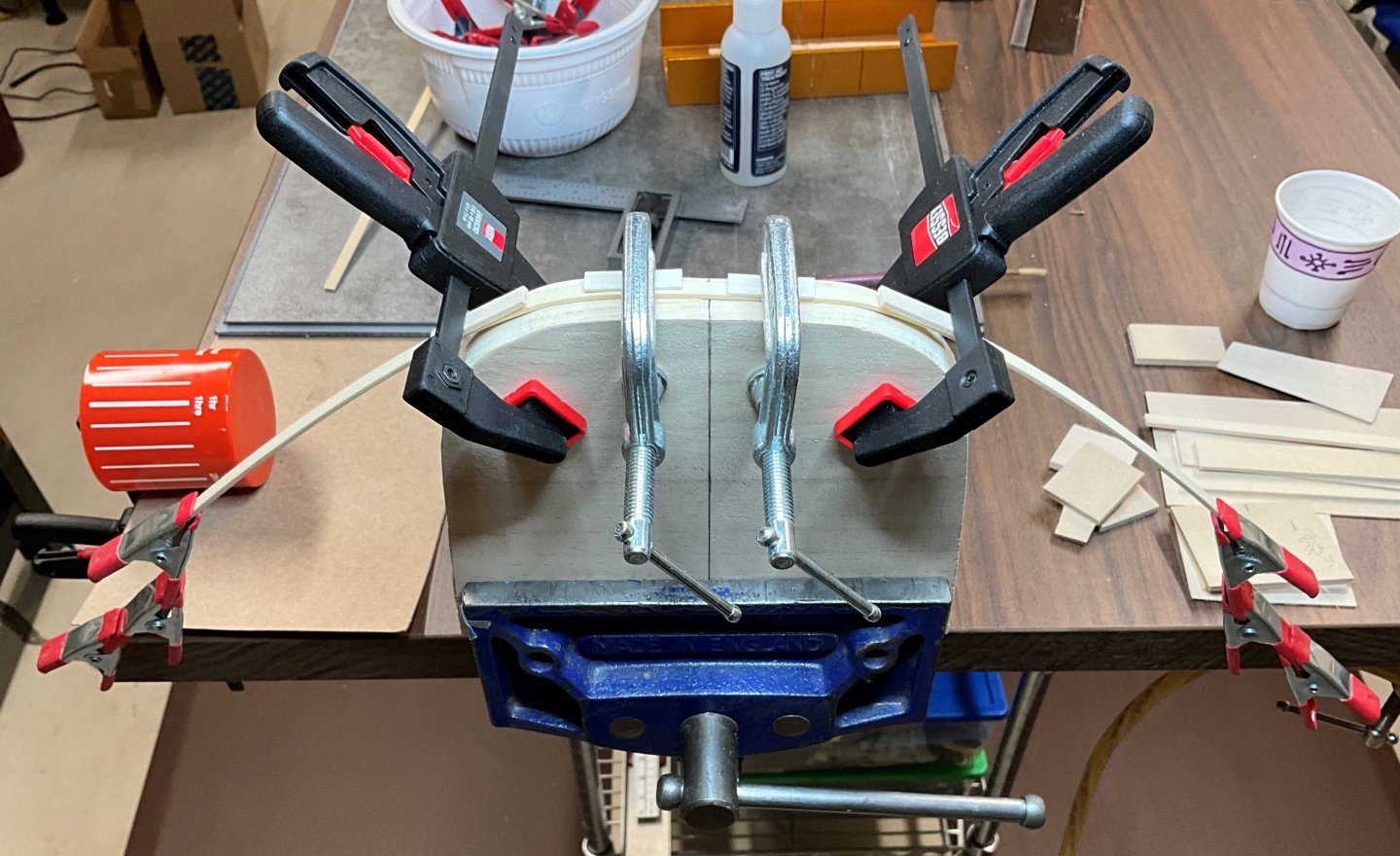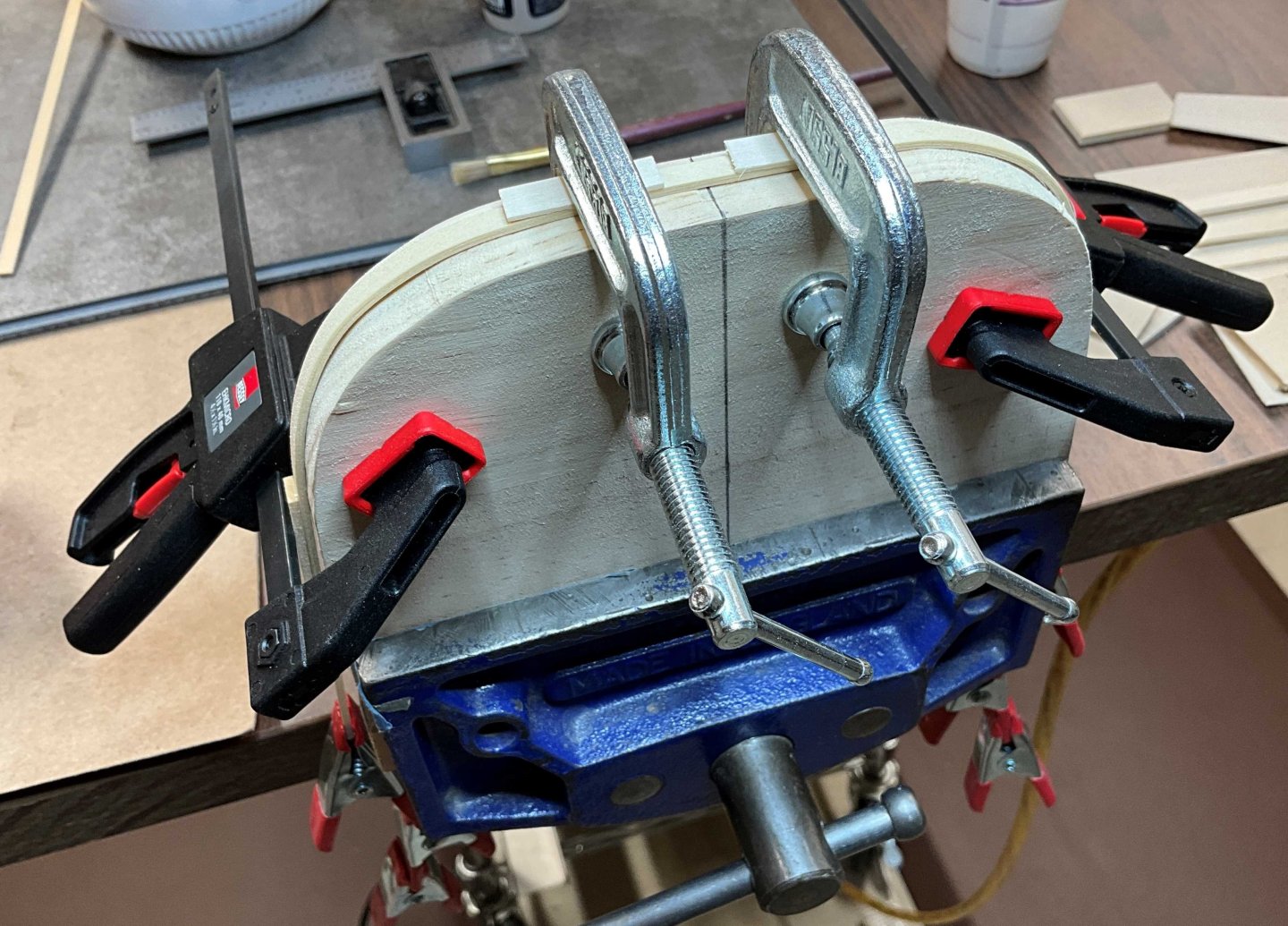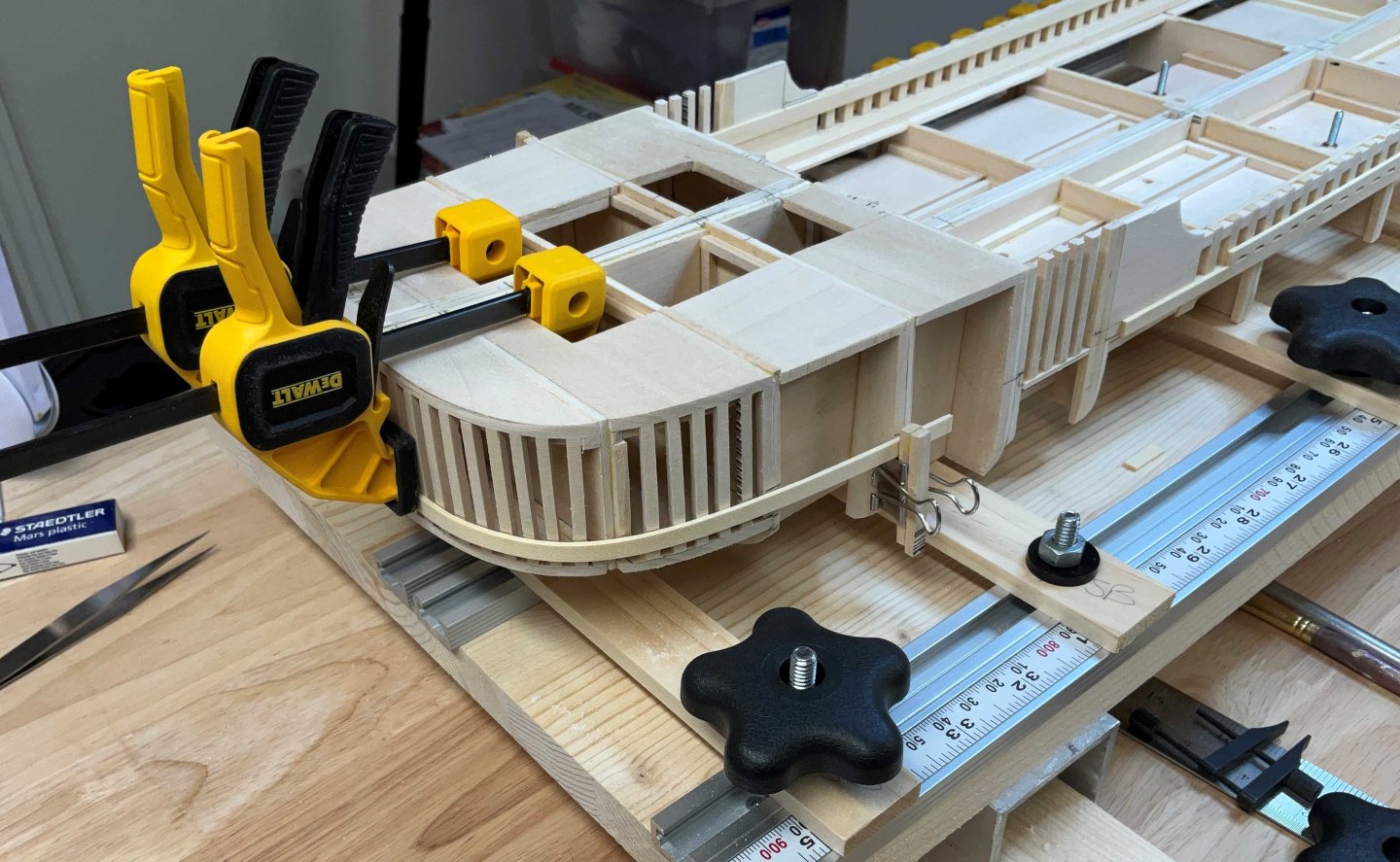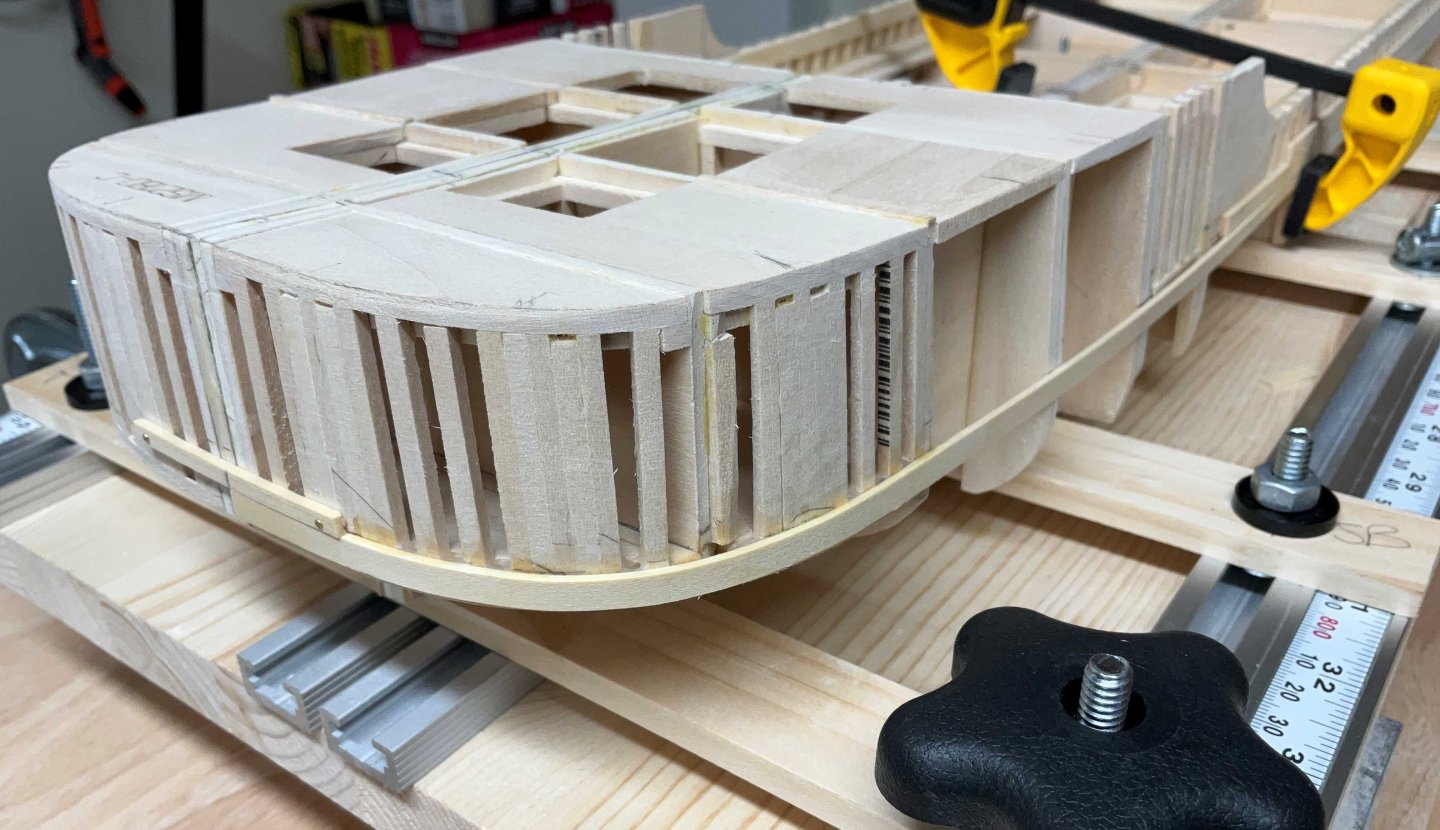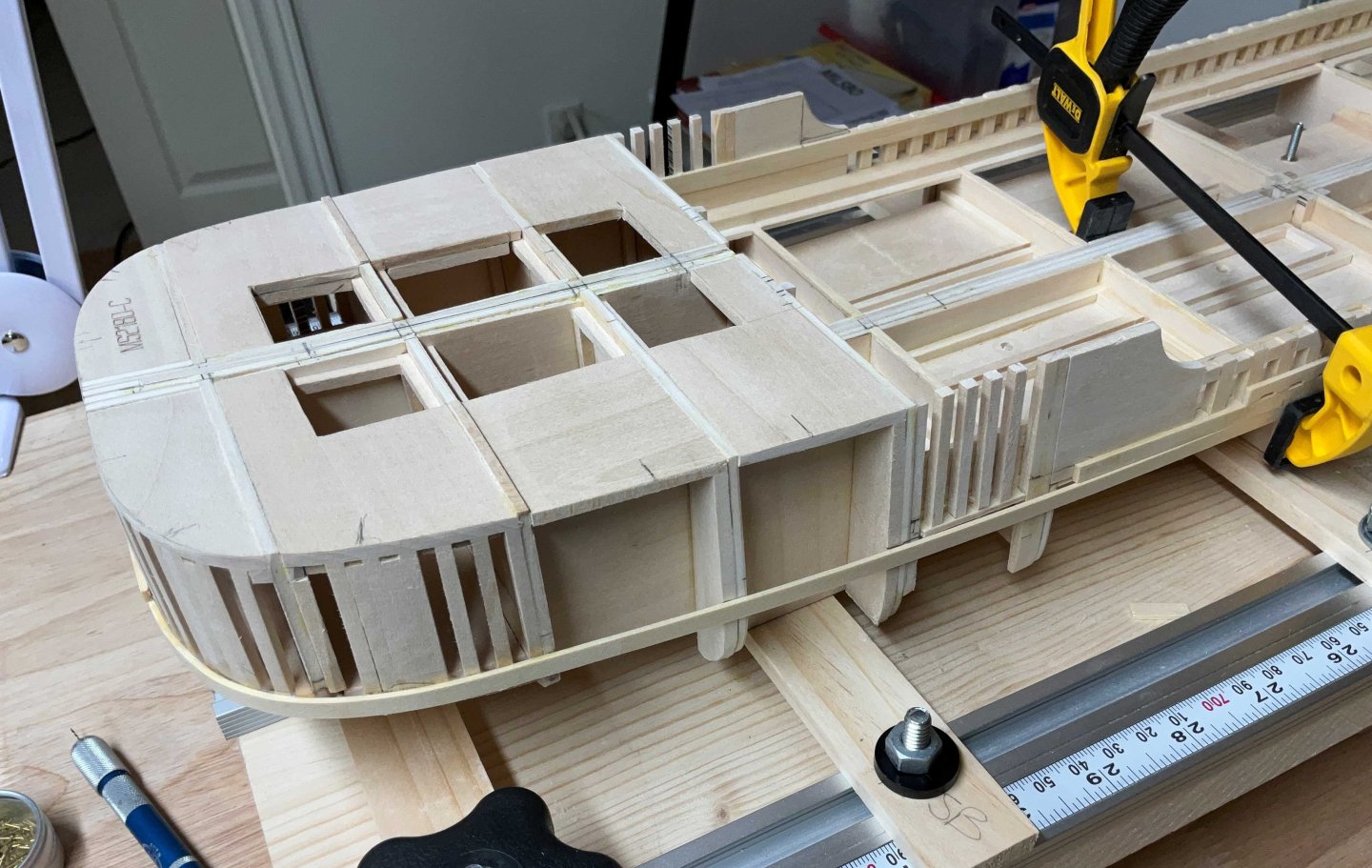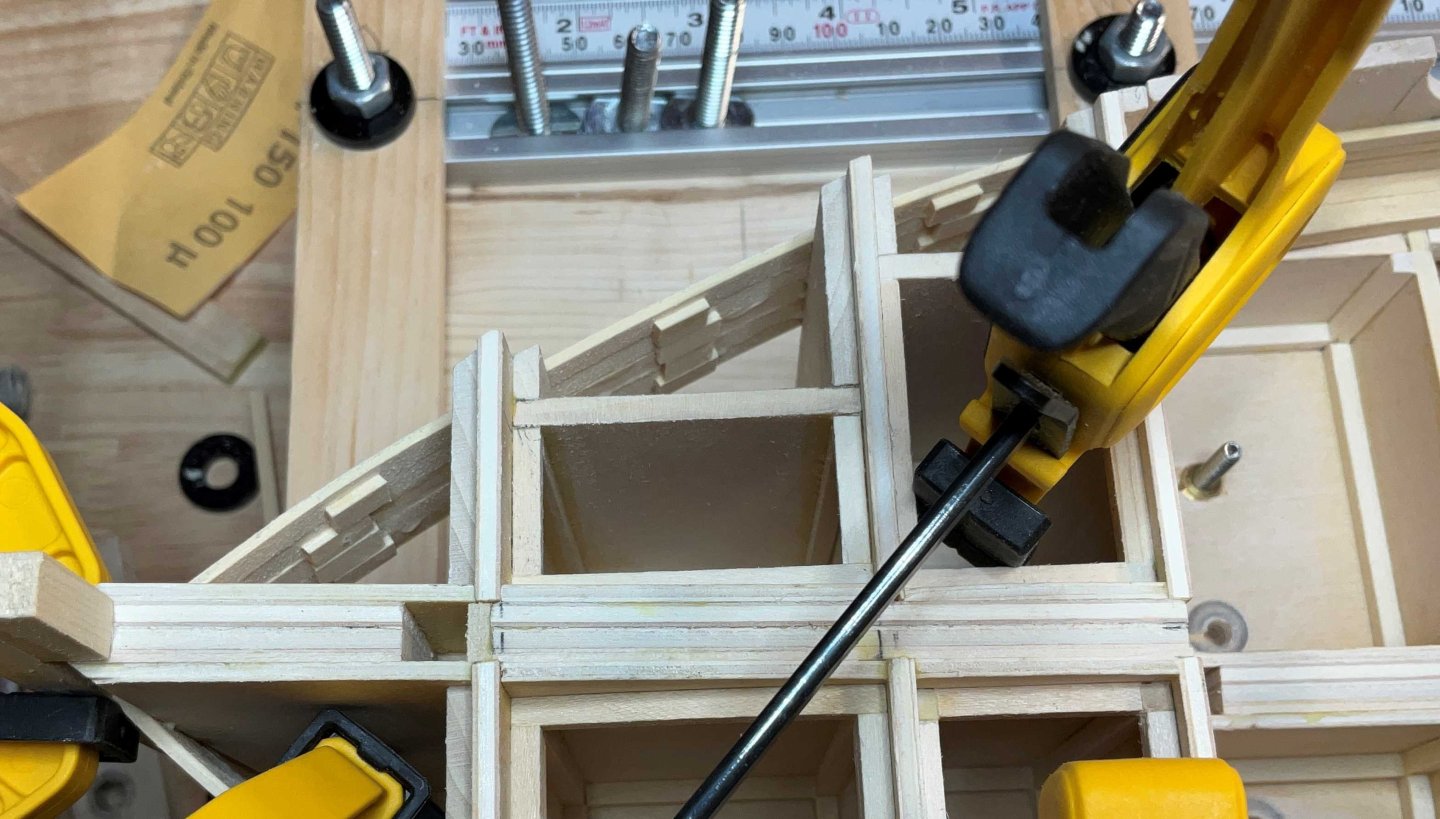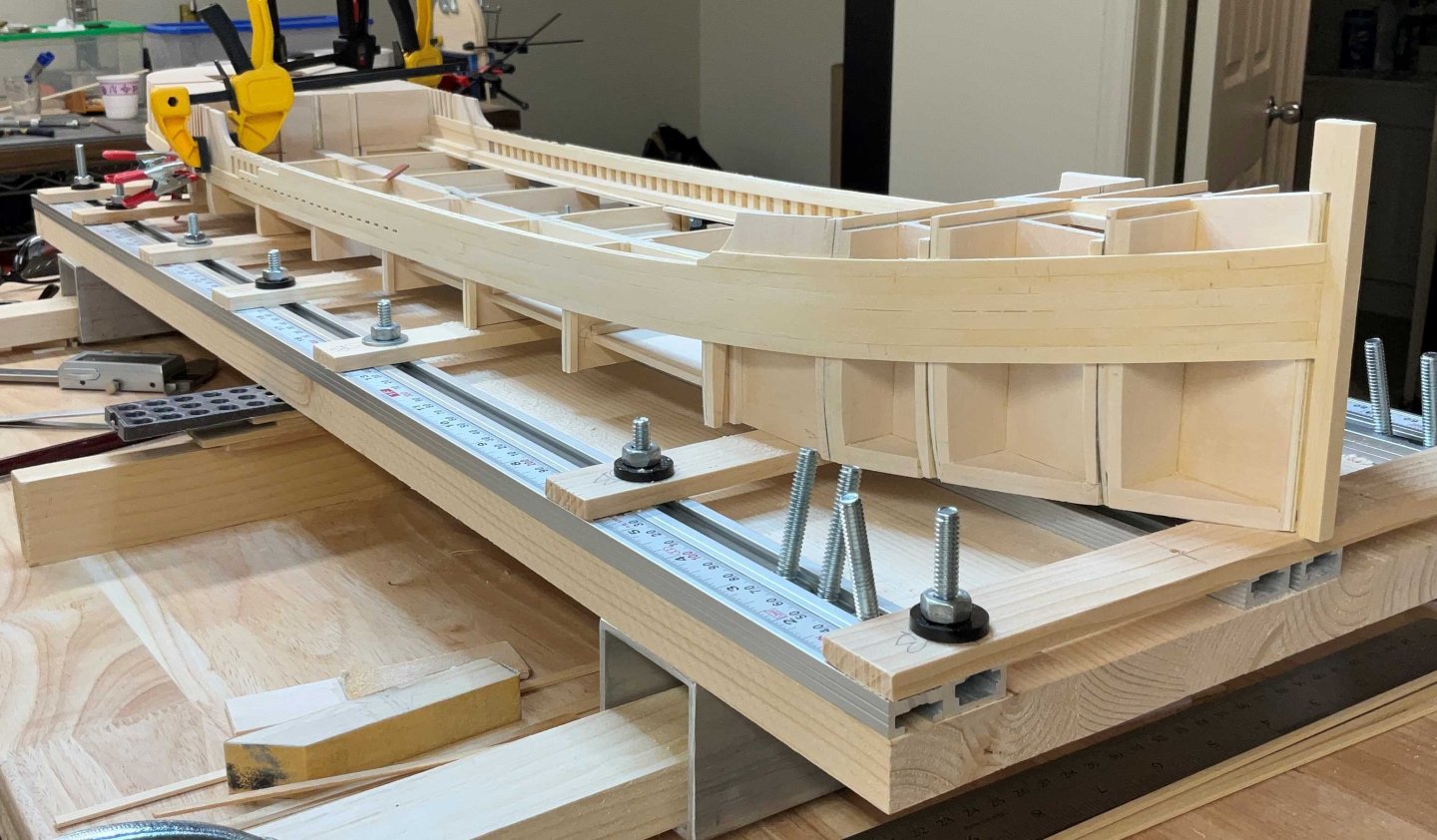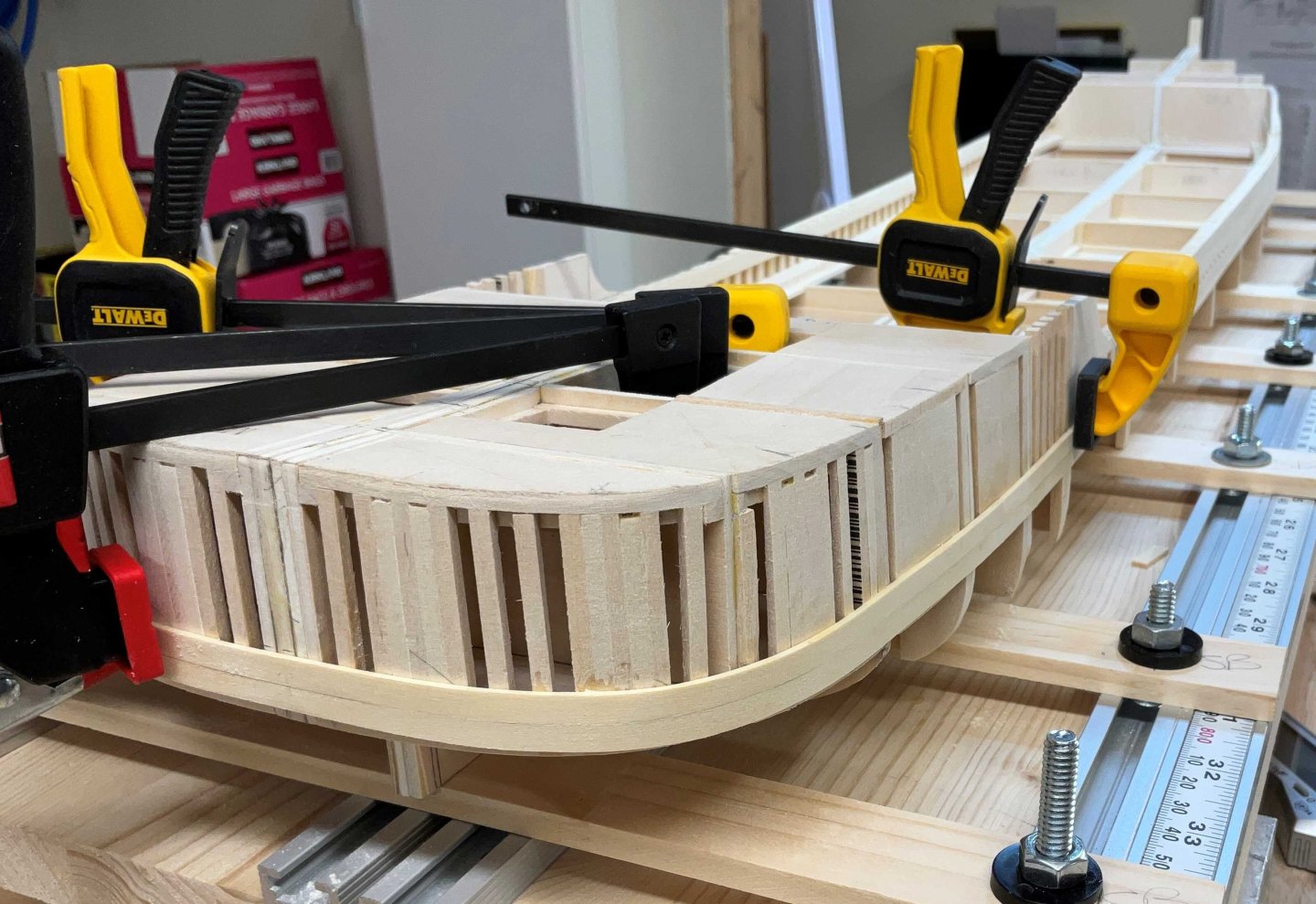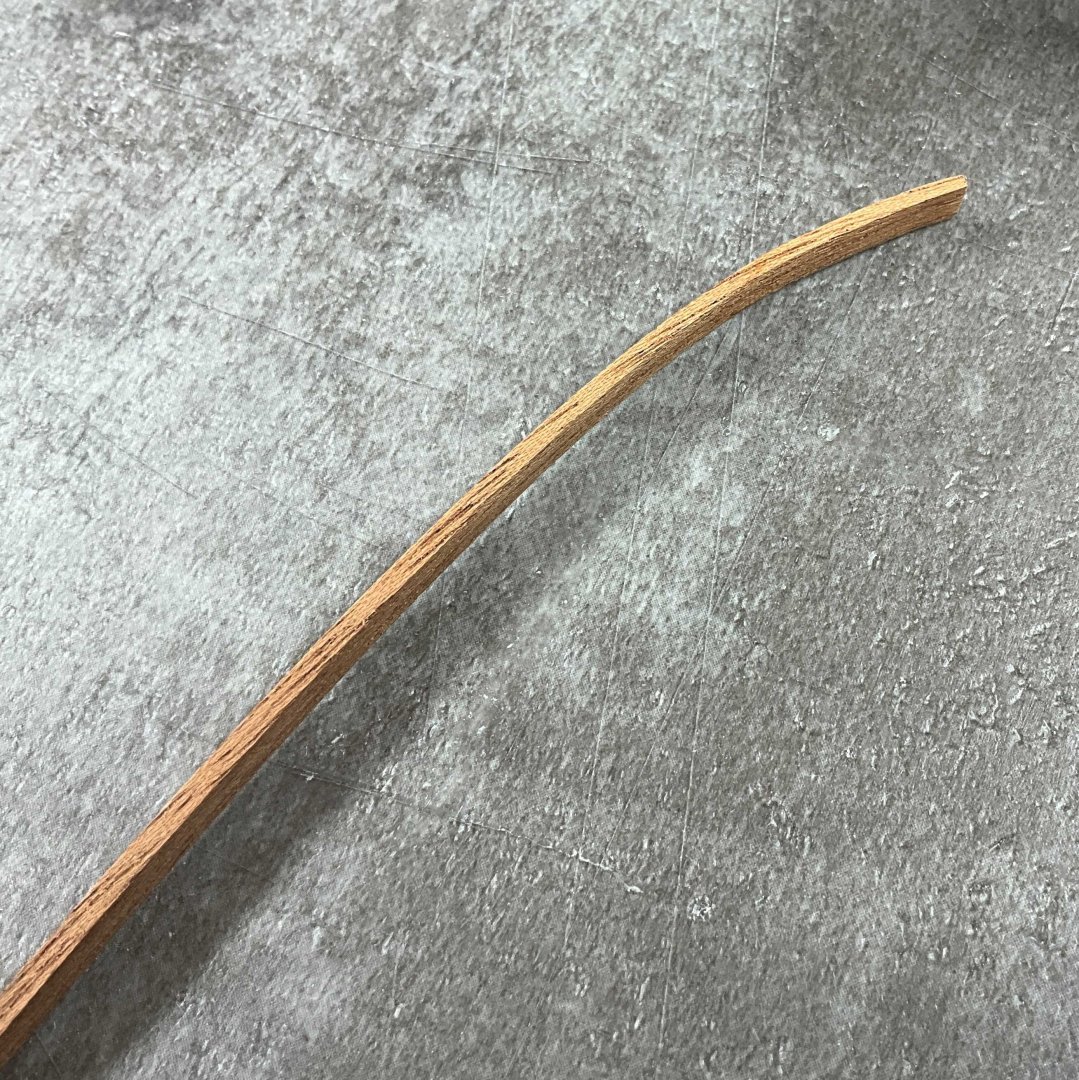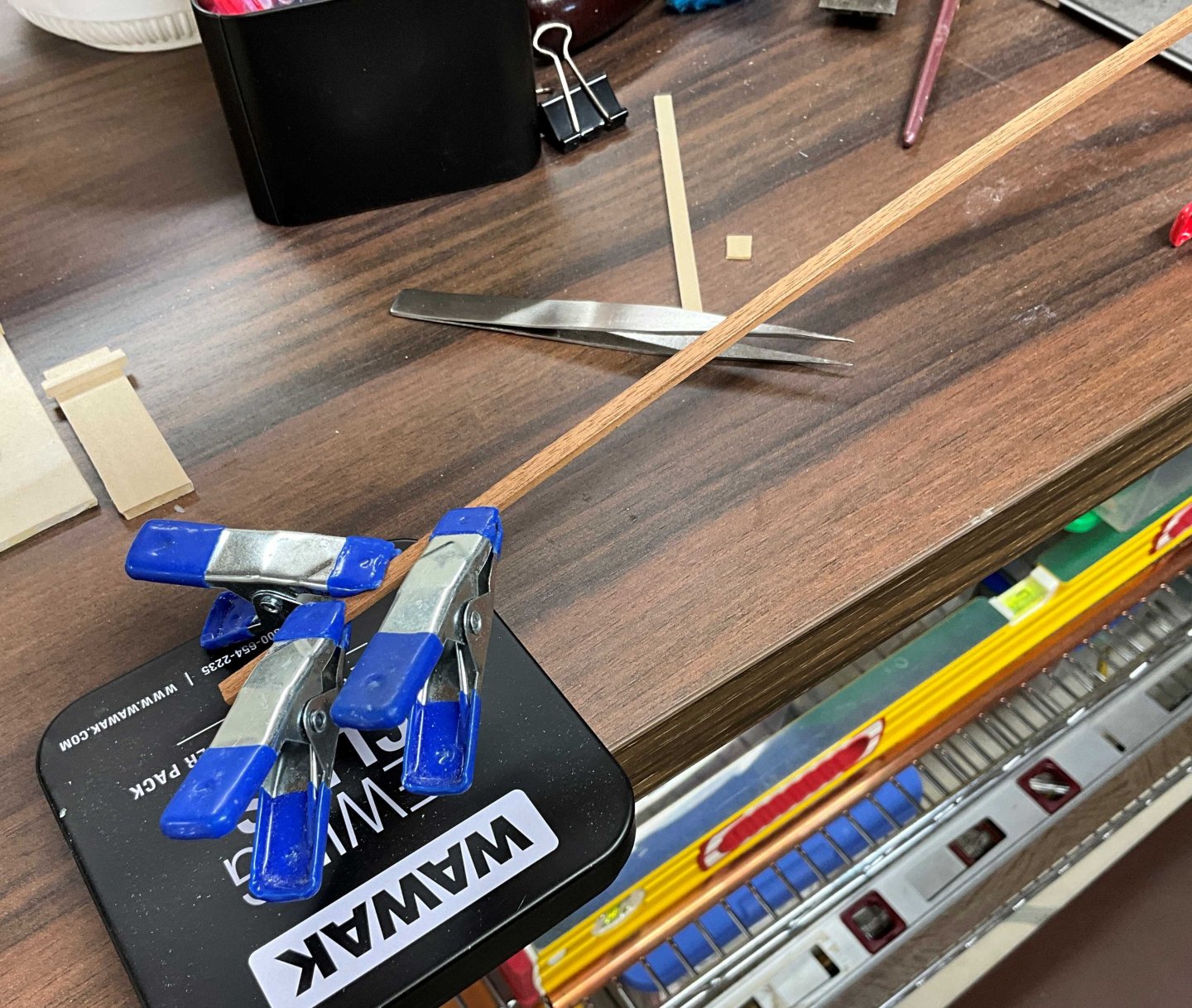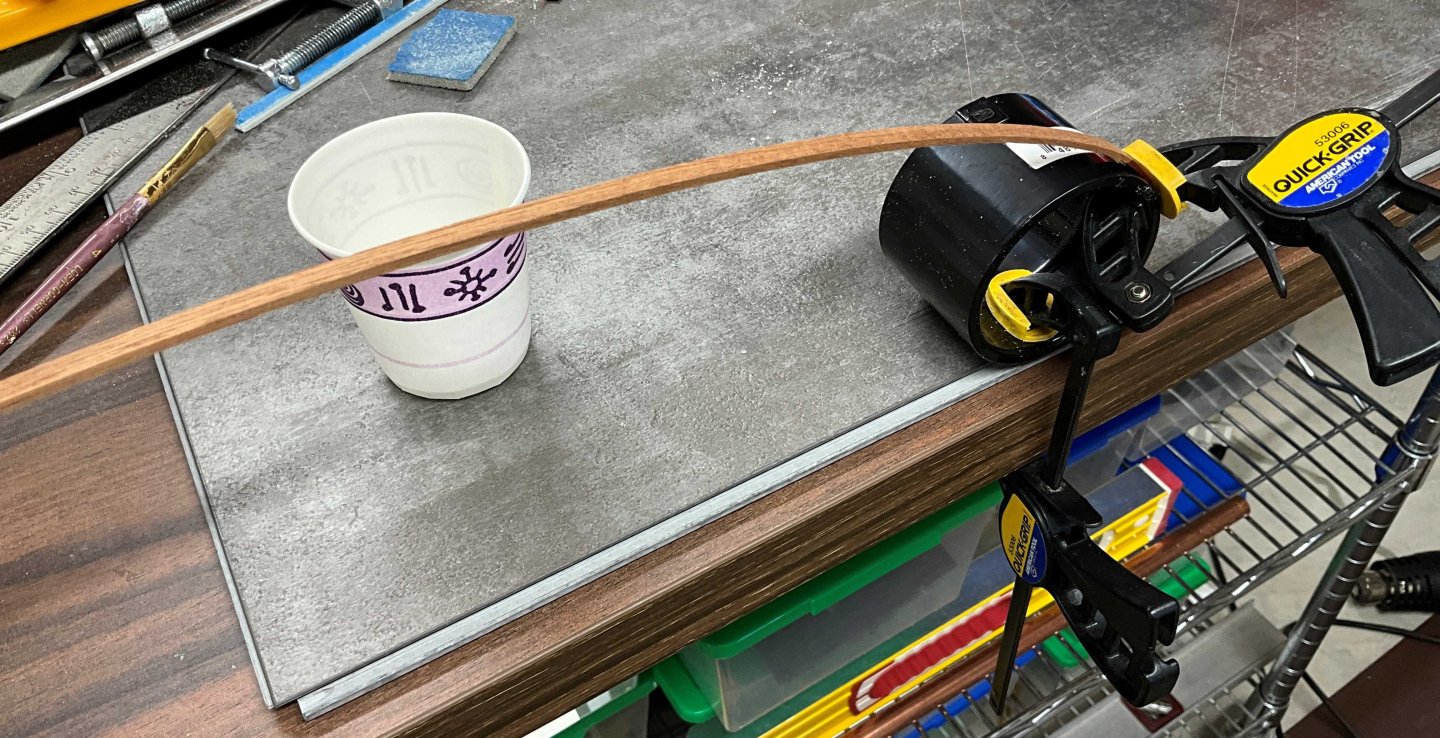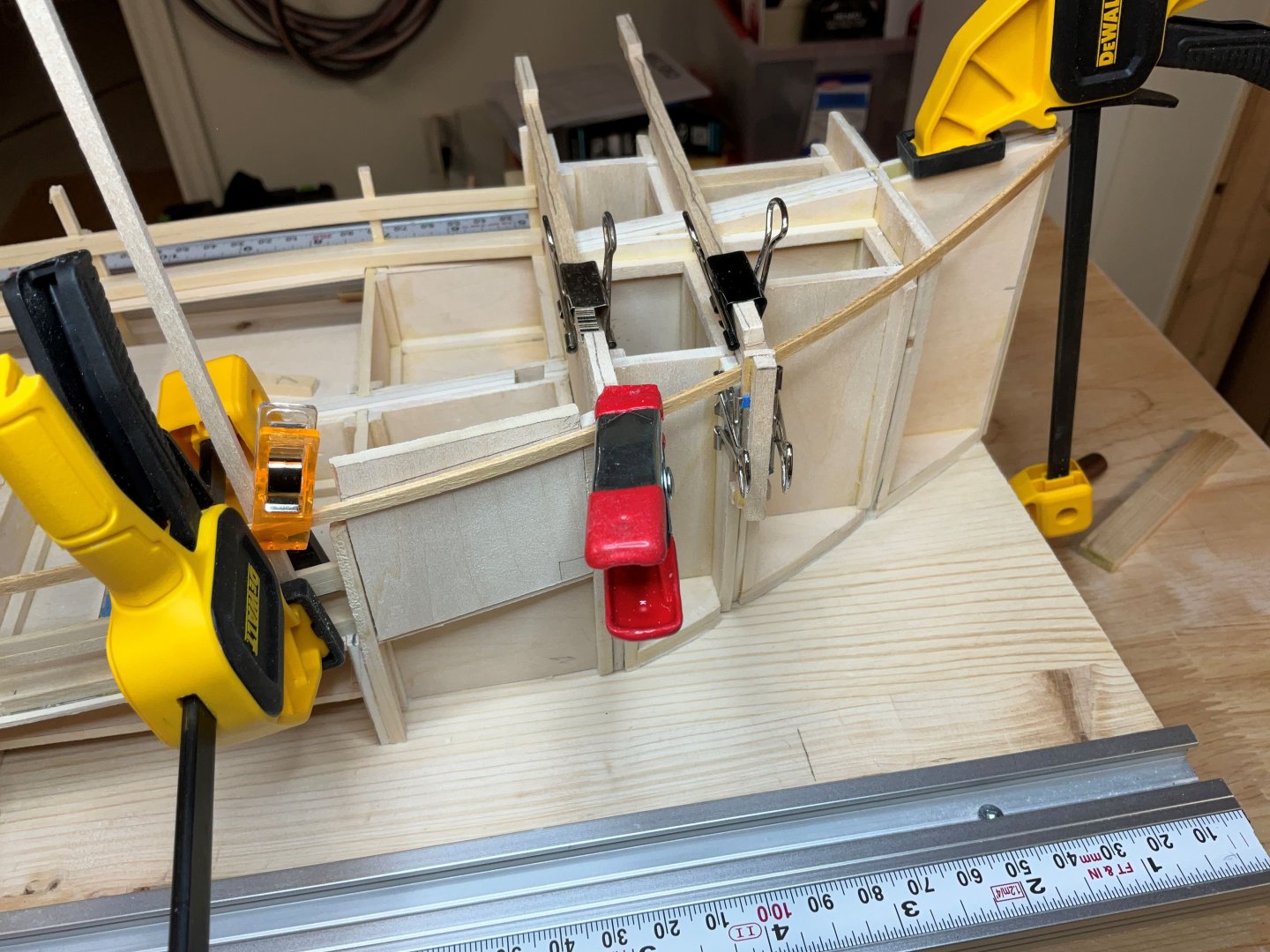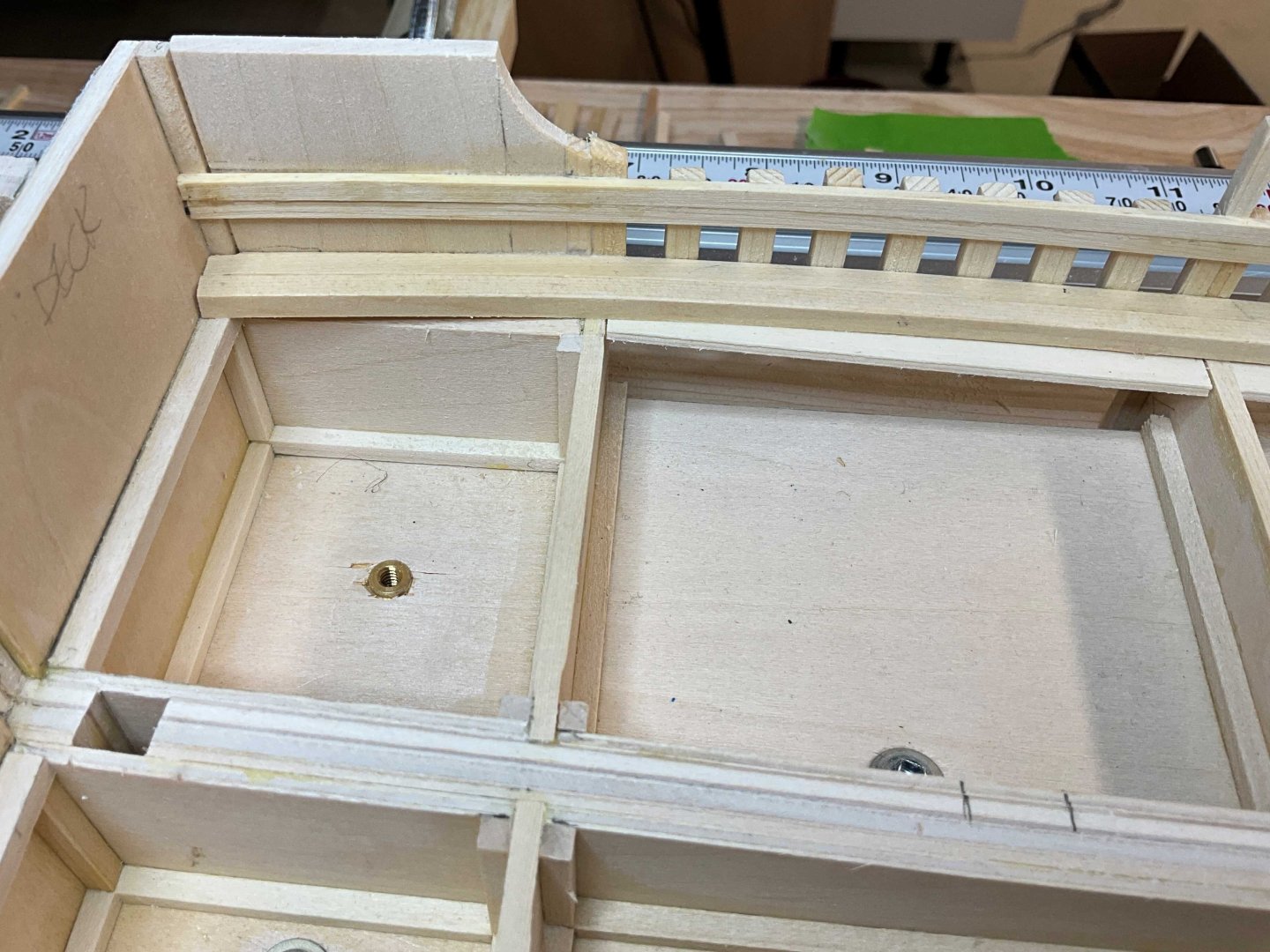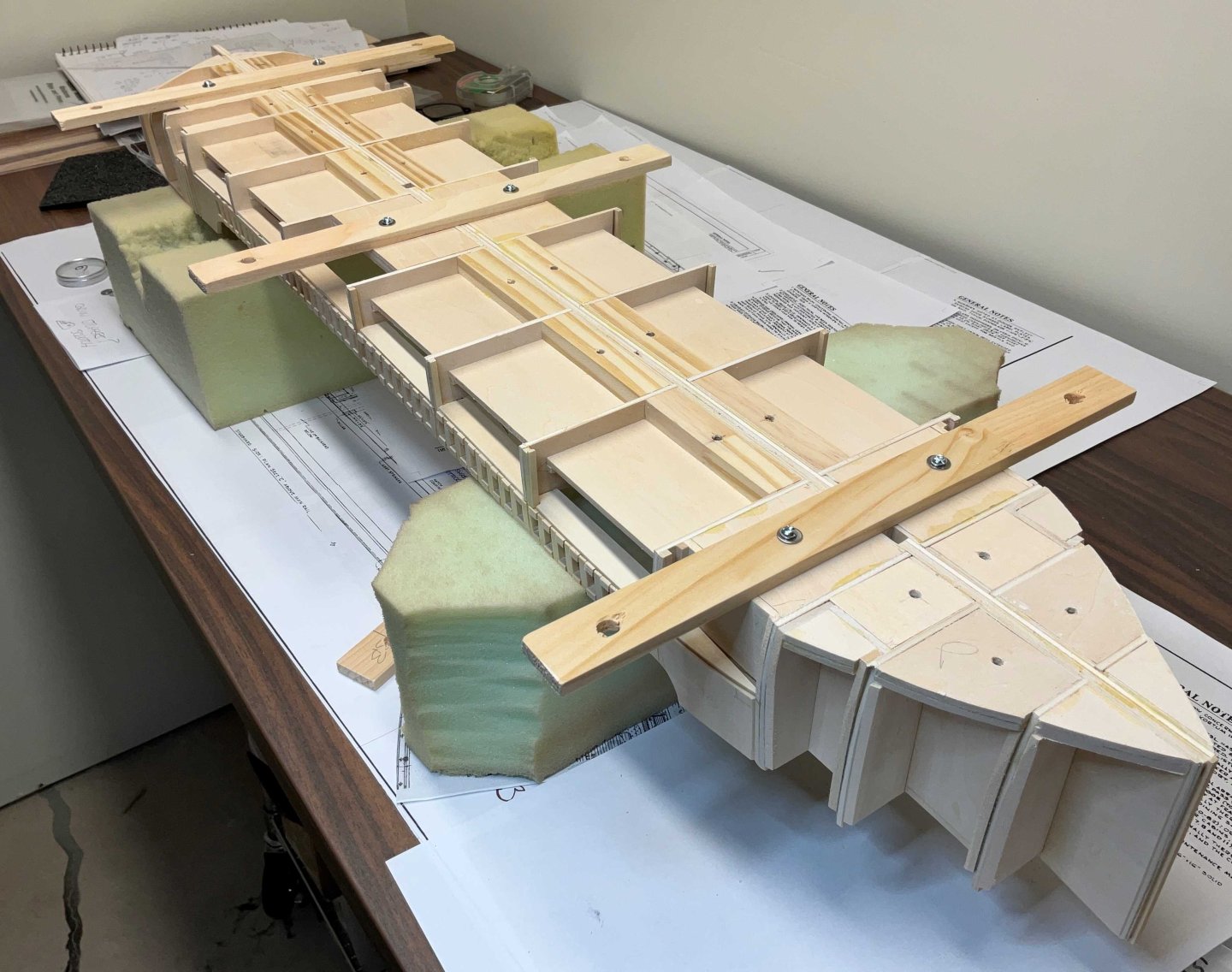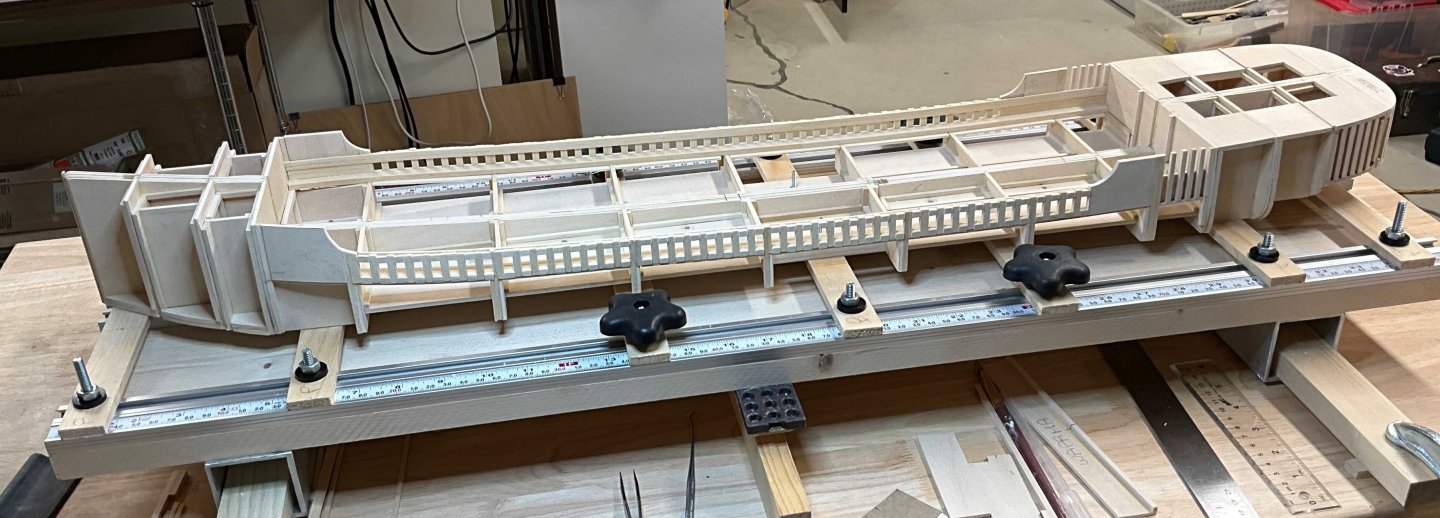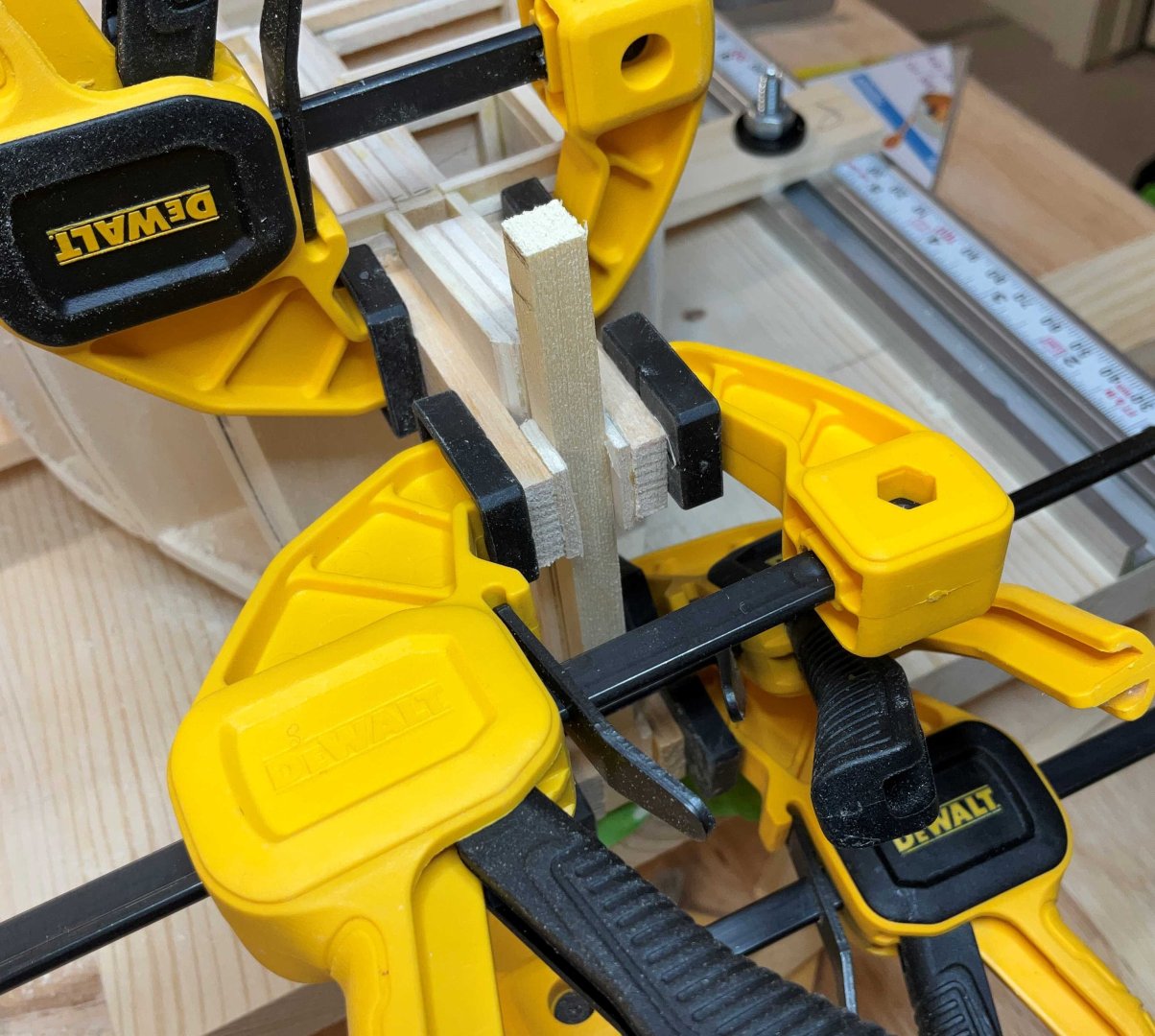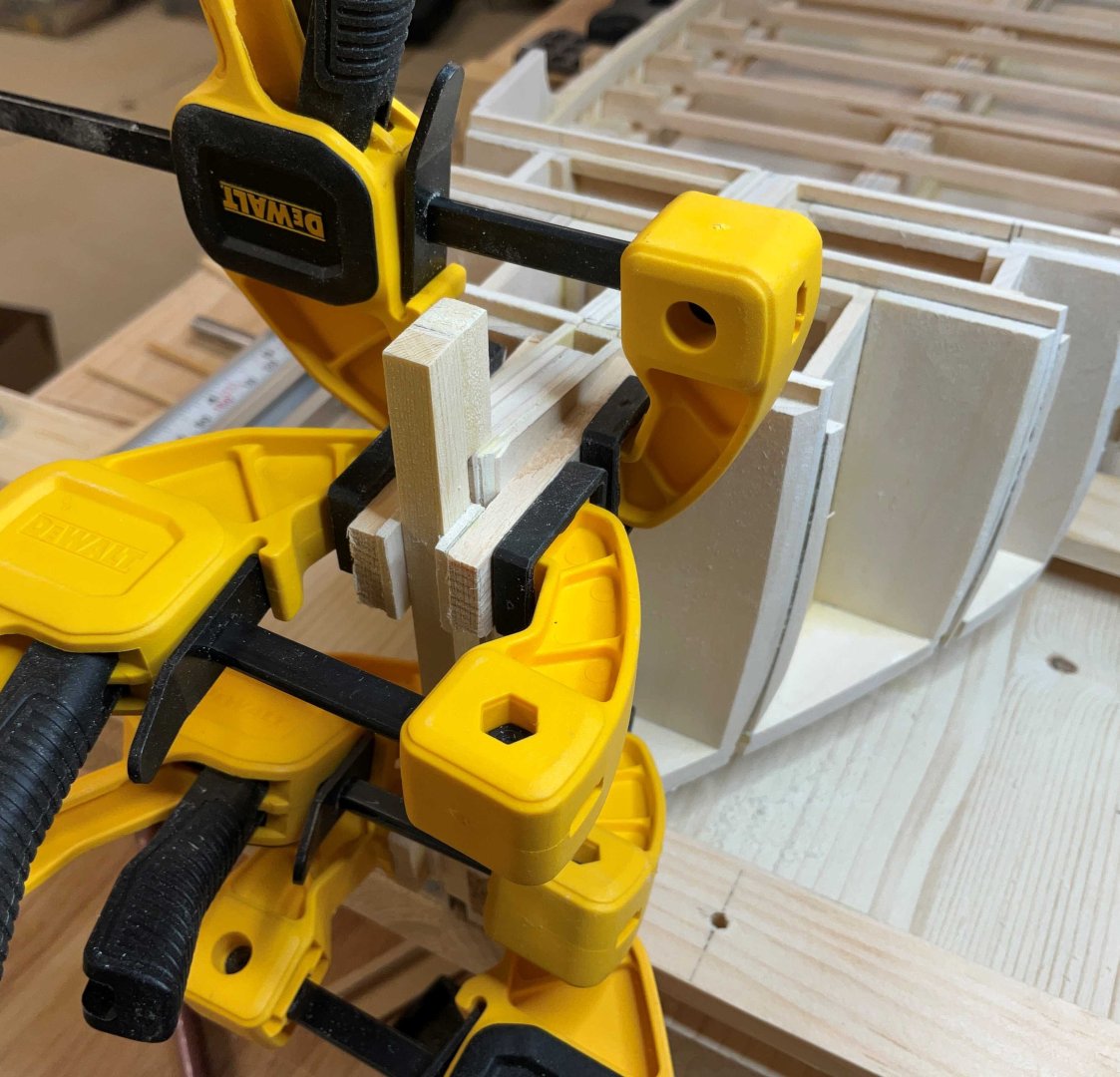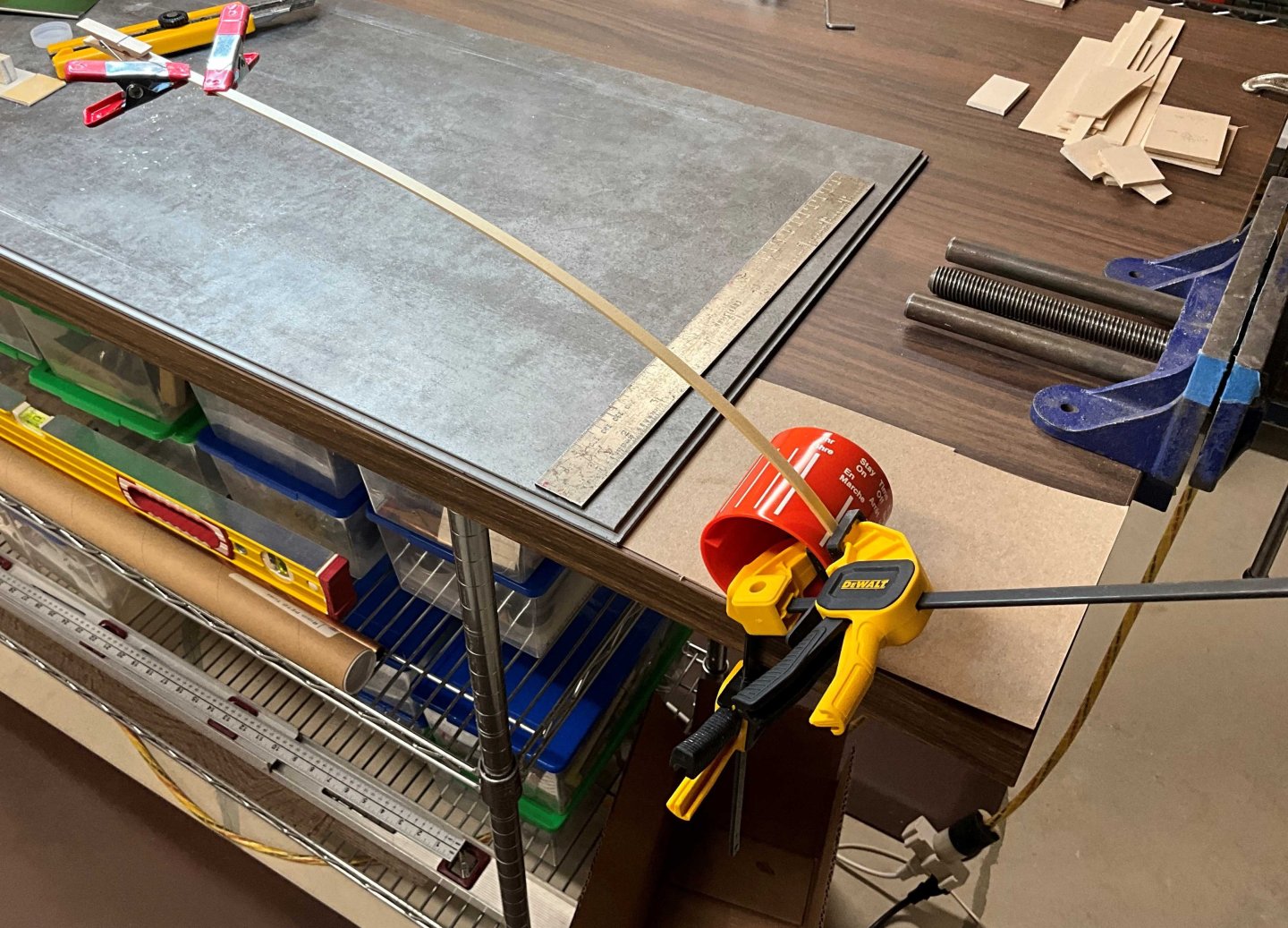
Paul Le Wol
NRG Member-
Posts
1,044 -
Joined
-
Last visited
Content Type
Profiles
Forums
Gallery
Events
Everything posted by Paul Le Wol
-
Hi Kim, the wood effect on the masts and the painting of the eagle look great!
- 7 replies
-
- America
- Schooner Yacht
-
(and 2 more)
Tagged with:
-
Jacques, just thinking out loud here but would it be possible to draw the stem on the drawing with the A and B cant frames. If the upper ends of A and B are the same distance apart as on the plan view then having the stem drawn there might get you close to the required length
- 139 replies
-
- ancre
- Bateau de Lanveoc
-
(and 2 more)
Tagged with:
-
Keith, my thoughts and prayers are with you.
- 732 replies
-
- Lula
- sternwheeler
-
(and 1 more)
Tagged with:
-
Thank you Glen, This is my favorite part of the job. (Not that its a job.🙂) Thank you Yves, I don’t think I’m up to the challenge of making a realistic sea base. I was thinking about getting a slab of 1/2 Corian countertop type material cut for a base. Something dark grey. Thank you Jacques, the jig worked well but wow did that take a long time! Thank you so much Keith.
-
Hey Everyone, thank you for the Likes and Comments. The are always appreciated! Planking has been moving along at a pretty good clip. The first plank laid was CA'd into the rabbet at the stem. Spacers were made that sit between the waterways and the longitudinal boards on the bulwark stanchions making it easier to maintain the proper run of the first strake. The strake above this one contains the freeing ports and the scuppers. The scuppers were filed into one plank port and starboard using a strip of brass with a notch filed into it. There are 21 scuppers on each side. The planks are edge glued and glued to the bulkheads using white PVA. Small tabs are glued to the backsides of the planks to help keep them aligned. A mold was cut out of a pine board in order to shape the planks running around the stern. The two trigger clamps pivot on their jaws as the planks are moistened and heated with a heat gun. These planks are attached with CA just at the centerline and then with PVA the rest of the way. I added some filler blocks where the port lights will go. The next photo shows the tabs behind the planks ganging up at the bow. And this is what she looks like today. The planks are not in scale but the wider planks are just easier to install and the hull will be painted. Once it is planked up to the forecastle and cabin decks the model will have to be tipped over and the lower bulkheads faired. Take care!
-
Mohogany plank bending
Paul Le Wol replied to Bontie's topic in Building, Framing, Planking and plating a ships hull and deck
Hi Bontie, before you use boiling water you could try using a heat gun set on Low and room temperature water. I've been bending a fair bit of Alaskan Yellow Cedar lately so while I have everything set up I got out a strip of 2mm x 5mm mahogany and clamped one end that had been sitting in a cup of water for a few minutes to an ABS coupling. The other end is weighted with mini clamps. Applied heat to the strip of wood while every so often brushing on more water. This result took about 5 minutes. If you are edge bending you can still use a heat gun and water but in a bending jig. Good luck with your project. -
Buying Filler Blocks
Paul Le Wol replied to mikiek's topic in Building, Framing, Planking and plating a ships hull and deck
Very true. -
Buying Filler Blocks
Paul Le Wol replied to mikiek's topic in Building, Framing, Planking and plating a ships hull and deck
Hi Mike, if you decide not to use filler blocks you could try an alternate method that I have used and still use. Glue small pieces of offcut planking to the backside of the planks to keep them in line. If you dry fit the plank after shaping and/or bending you will be able to see where they need to be placed. I then glue to the bulkhead and edge glue with white pva. After a while you will be able to figure whether the tabs need to be attached to the previous plank or the plank that you are currently working on. Good luck with your build. -
Hi Jacques, I really enjoy using my Ultimation hand operated disk sander and wondered why someone doesn’t make a similar spindle sander. There are lots of sites online about making your own treadle powered lathe. Something like that would be nice and quiet.
- 139 replies
-
- ancre
- Bateau de Lanveoc
-
(and 2 more)
Tagged with:
-
Hi Nils, happy that you are able to to get some build time in. Your Elbe 1 is looking great!
- 303 replies
-
- lightship
- Feuerschiff Elbe 1
-
(and 1 more)
Tagged with:
-
Keith, it’s been fun to look at the photo of the real Lula and find the things you’ve been pointing out. Great work!
- 732 replies
-
- Lula
- sternwheeler
-
(and 1 more)
Tagged with:
-
Hi Everyone, I hope you are all well. Thank you all very much for your support. The bulwarks have been completed. The model was unscrewed from the build board and three standoffs were attached to the hull with #6-32 machine screws. The other four supports are moveable under the hull. The stem is 1/4" x !/4" AYC , It was attached next. After a bit more fairing the planking will begin at the stem with 3/16" x 1/16" strips of AYC. The top of the first strake will be level with the top of the waterways. This plank should be 5/32" but I don't have that size available. My thinking was that a wider plank will probably make it easier to get a nice curve along its length. I've been wetting one end for a few minutes, clamping it and drying it with a heat gun with a few clamps pulling down the far end. I let it sit like that overnight. This could take a while but there's lots of other stuff to work on.
-
Looking for ideas for work area
Paul Le Wol replied to Desertanimal's topic in Modeling tools and Workshop Equipment
The table for the build board is 24” x 48” and the other two are 24” x 72” which are just those wire racks from Costco with an 1 1/4” countertop slab mounted on top. -
Looking for ideas for work area
Paul Le Wol replied to Desertanimal's topic in Modeling tools and Workshop Equipment
Hi Chris, I have three work tables. One for drawings, one for the build board and one for fabricating. I always stand while working so the tables are all 42” high which is about elbow height for me. The build board and fabricating tables sit in the middle of the room so that all sides are accessible. If I get tired of standing I have a roll around drafting chair with the seat sitting 30” off the floor. I find that this works for me because I don’t like having to climb out of a chair if I have to go get something which is quite often. I never put anything in cupboards because once the door is closed I can’t remember where it is or if I even have such a thing. Each table has an led shop light hanging over it and an articulating magnifying light clamped to it. And lastly I invested in a good shop vac that doesn’t scream when you turn it on. Good luck with your new shipyard 👍
About us
Modelshipworld - Advancing Ship Modeling through Research
SSL Secured
Your security is important for us so this Website is SSL-Secured
NRG Mailing Address
Nautical Research Guild
237 South Lincoln Street
Westmont IL, 60559-1917
Model Ship World ® and the MSW logo are Registered Trademarks, and belong to the Nautical Research Guild (United States Patent and Trademark Office: No. 6,929,264 & No. 6,929,274, registered Dec. 20, 2022)
Helpful Links
About the NRG
If you enjoy building ship models that are historically accurate as well as beautiful, then The Nautical Research Guild (NRG) is just right for you.
The Guild is a non-profit educational organization whose mission is to “Advance Ship Modeling Through Research”. We provide support to our members in their efforts to raise the quality of their model ships.
The Nautical Research Guild has published our world-renowned quarterly magazine, The Nautical Research Journal, since 1955. The pages of the Journal are full of articles by accomplished ship modelers who show you how they create those exquisite details on their models, and by maritime historians who show you the correct details to build. The Journal is available in both print and digital editions. Go to the NRG web site (www.thenrg.org) to download a complimentary digital copy of the Journal. The NRG also publishes plan sets, books and compilations of back issues of the Journal and the former Ships in Scale and Model Ship Builder magazines.




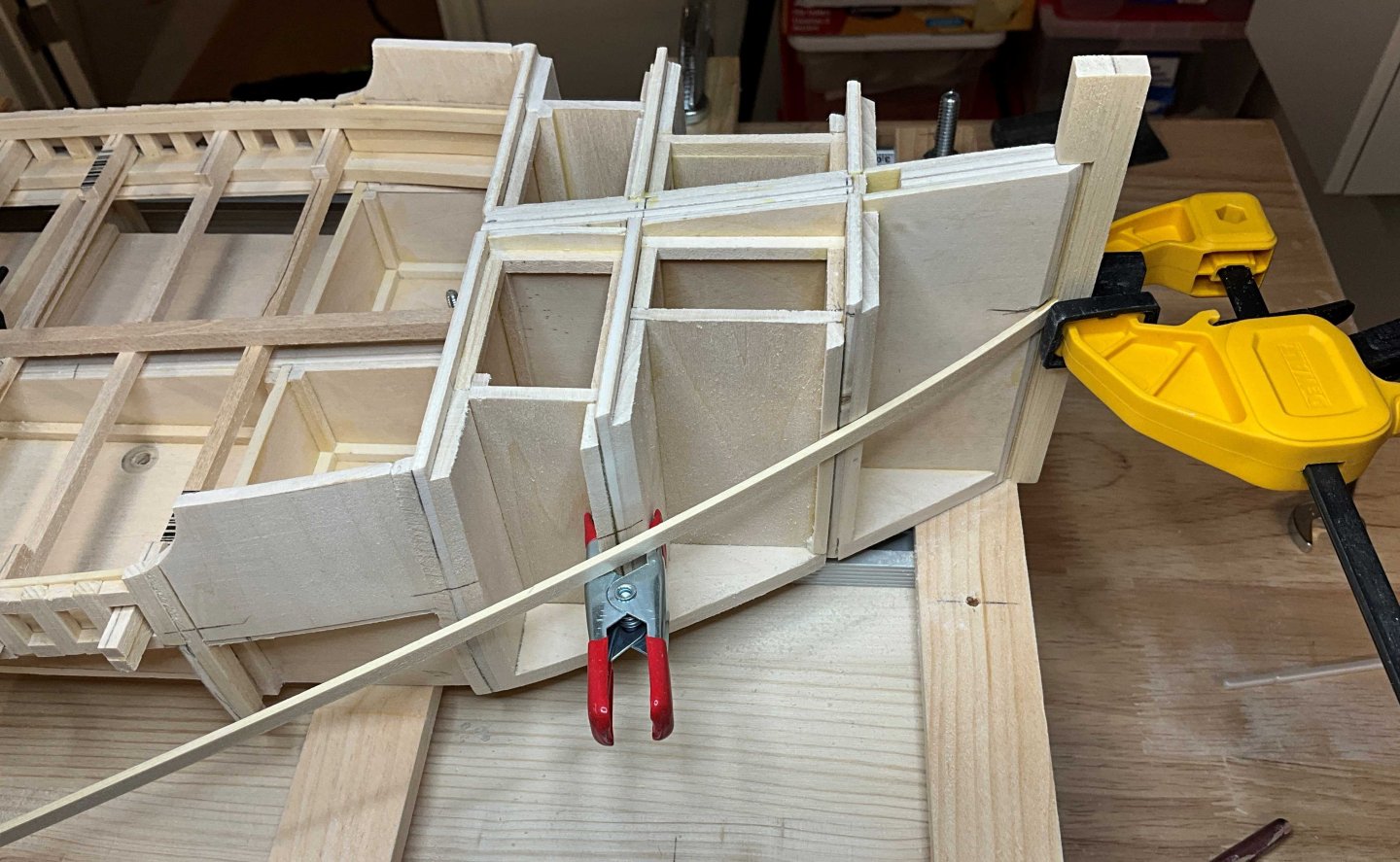
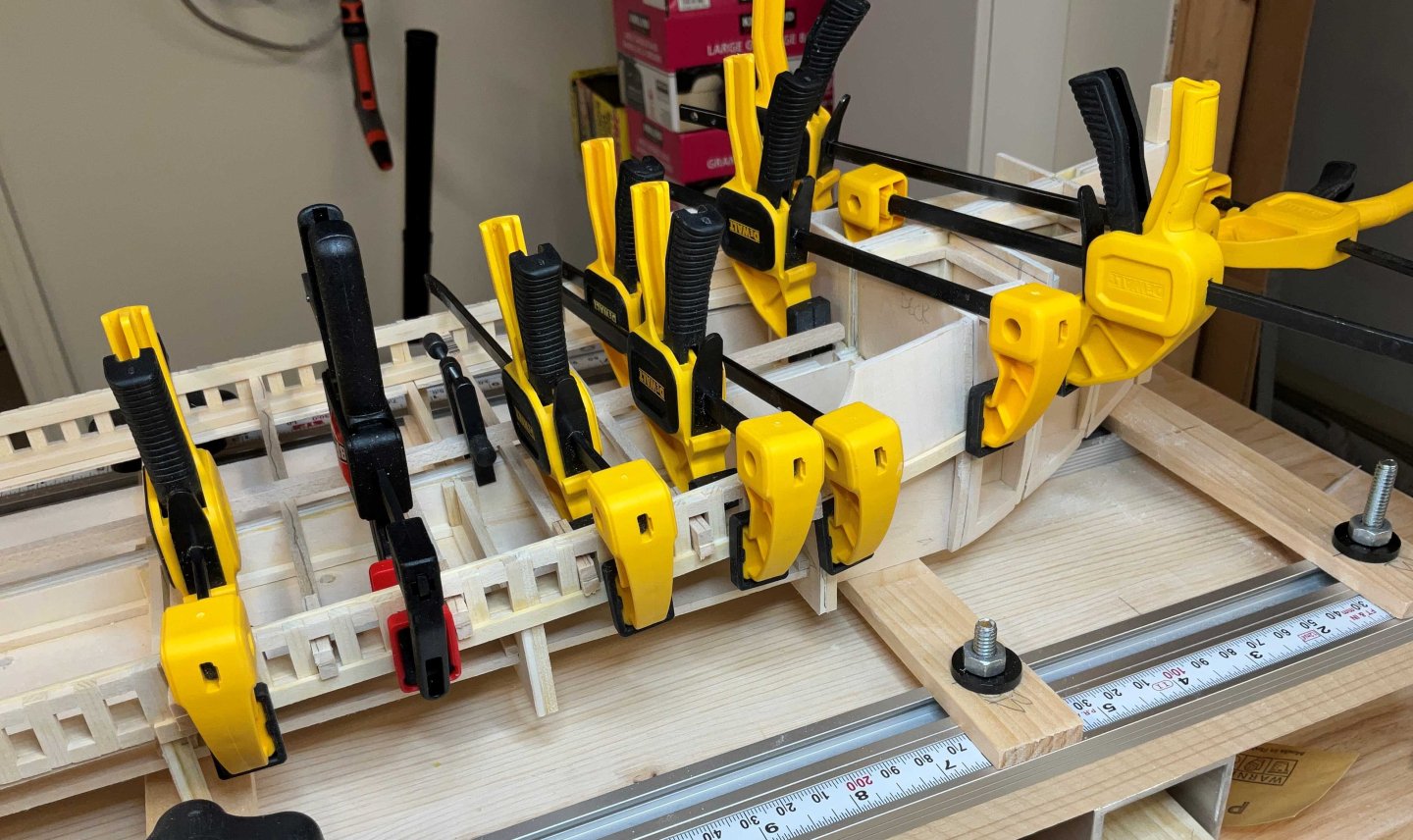
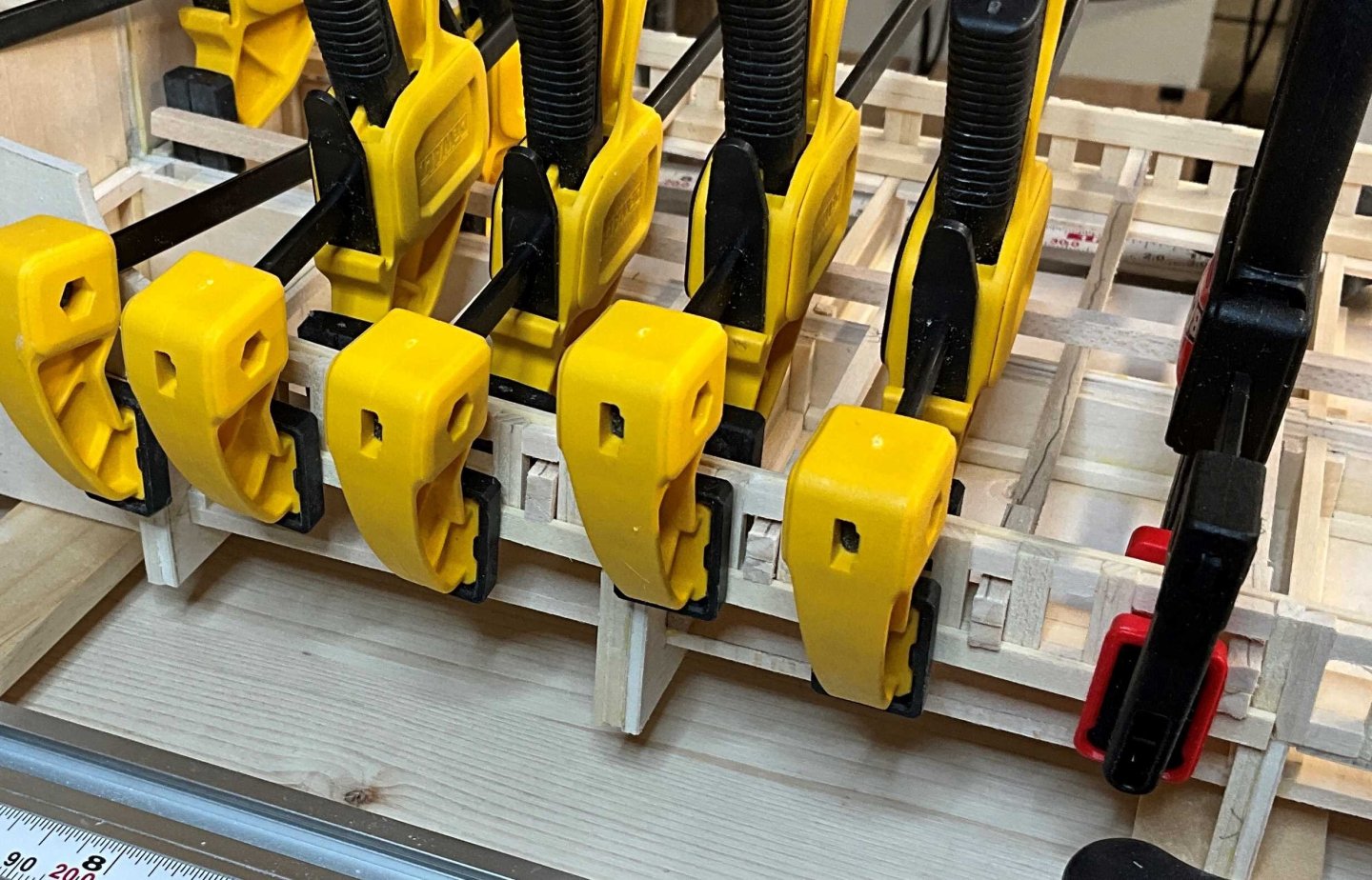
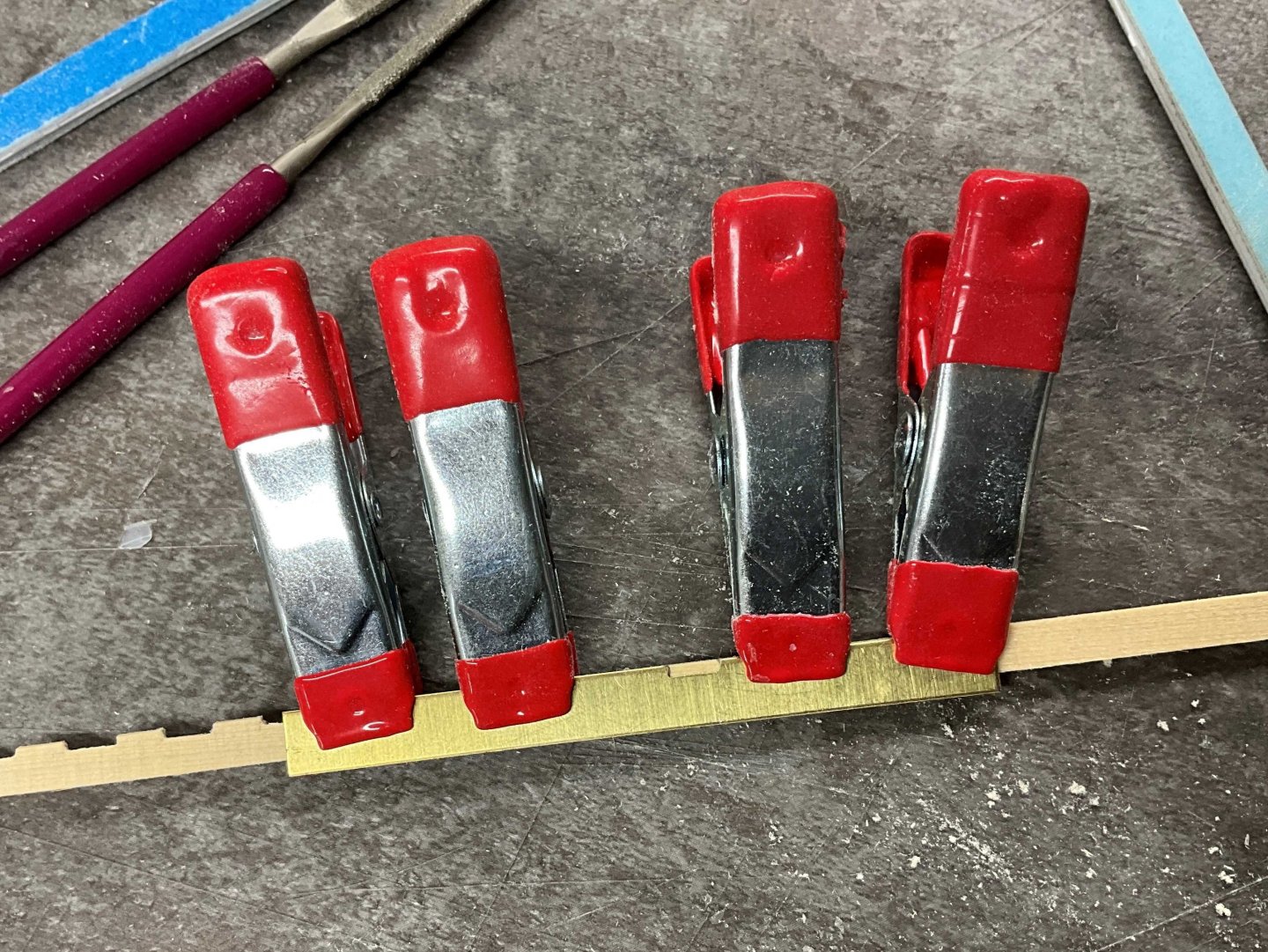

.thumb.jpg.61460303201fd44b411b9f811f97ae9e.jpg)
